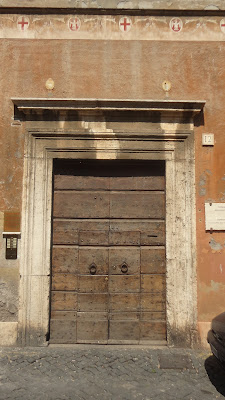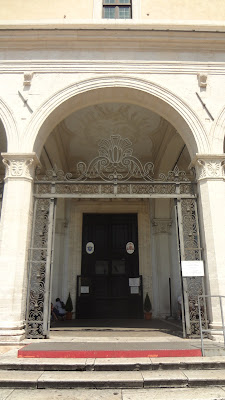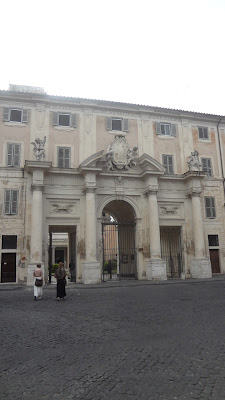Entrances to Rome
About Me

- Amanda E.
- Welcome to my photo journal from my art history study abroad trip to Rome. The focus of this blog is to show pictures of one subject from Rome. My subject is doorways and I share some of the history of Rome and try to give some of the Roman intriguing Roman atmosphere. Please start by selecting the entries in order starting with entry 1 on the side bar. Enjoy and thanks for visiting!
Sunday, September 1, 2013
Wooden Doorways (entry 7/final)
The wooden doors were my favorite because it seems that each door was designed and built specifically for it's entryway. Each is unique and interesting, whether a tiny doorway falling apart or a large door built for a grand building.
Modern Doorways (entry 6)
In addition to the city's determination as a history keeper, Rome is also a city with a thriving modern culture. These are some of the doorways from that side of Rome, from the upscale clothing stores, hole-in-the-wall-restaurants, tourist shops, and neighborhood markets.
Graffiti Doorways (entry 5)
Graffiti is a common sight in Rome. I am not sure what Romans think about their doors being spray painted, but I think it is a positive addition to the atmosphere of Rome (of course I can't read what the words actually say). With so much preservation of ruins in Rome, it's a rather refreshing sight to see some haphazard color added to the city's streets. These are only a few pictures of graffiti-ed doorways, I could have taken hundreds of pictures of them.
This is not graffiti exactly, but a type of street art. These are sliding doors covering booths for the daily open market in Trastevere. Each door says "Before I die..." in a different language and people wrote a wish from their bucket list on the doors in chalk.
Painted Doorways (entry 4)
I thought these doors were interesting. These top three doors are from the Villa Farnese, a large house from the Renaissance period. While these doors are real, the pillars and seemingly 3D embellishment around them are painted on the walls.
These two doors in the Villa D'Este, a large Renaissance estate outside of Rome famous for it's fountain gardens. The doors are actually not doors at all, but part of the wall mural.
Church Doorways (entry 3)
Churches are a major part of the history and atmosphere of Rome, many of the church buildings have a deeper history than just a worship site that they are now. Here are some of the outside and interior doorways of many of the churches we visited on the trip.
This doorway is the entry to a church which was originally a mausoleum built by Emperor Constantine's daughter for herself. It was later used as a church. The interior is round, unlike the basilica form of many other churches, because it was originally designed as a mausoleum. The ceiling of the church contains beautiful Early Christian mosaics.
This entryway (from the inside, bottom of the staircase) leads towards the burial site of Saint Agnes and the church built atop her grave. In order to build the church in that precise location, the hillside filled with Christian catacombs, was dug into to make a walkway down. The plaques on the walls are from some of the original tombs that were dug through to make this staircase down to the church.
The doorway to the church called St. Peter in Chains, which, as their relic, contains what is believed to be the chains that held St. Peter in Prison. Also inside this church is Michelangelo's sculpture of Moses, which we visited to the church to see.
The gated entry to Saint Cecilia, a church just around the corner from where we stayed in Trastevere, Rome.
This is the Basilica of Saint Pudenziana, a christian martyr. This church built on top of an Early Christian house church which belonged to Pudenziana's father, Pudens who is thought to have been mentioned in 1 Timothy. This church building is believed to be the first christian church built in Rome.
This is the Basilica to Saint Mary and the Martyrs. This building was originally part of the huge public Roman Diocletian bath structure and was remodeled into a church in the Renaissance by Michelangelo, although the actual church doors are a modern design. This semi-circular entryway once enclosed the Caldarium, which was the hot bath portion of the structure.
These are two doors inside different churches that lead to chapels.
Both these doors are actually not from Rome, but Florence, which we visited for a few days. They are examples of an interior and exterior of different Renaissance churches, of which there are many in Florence but not Rome. In Rome, many of the churches were remodeled in the Baroque period.
Subscribe to:
Posts (Atom)






















.JPG)





























